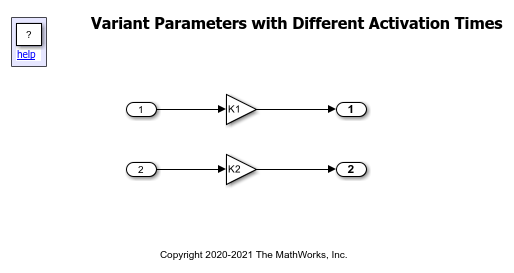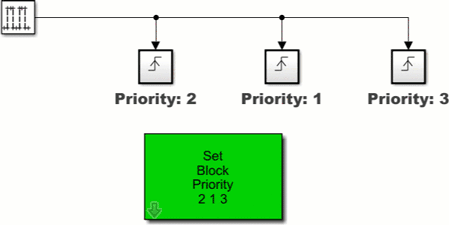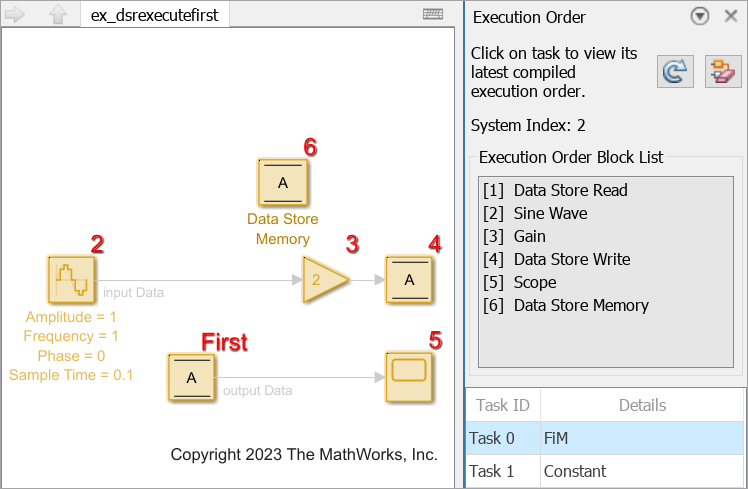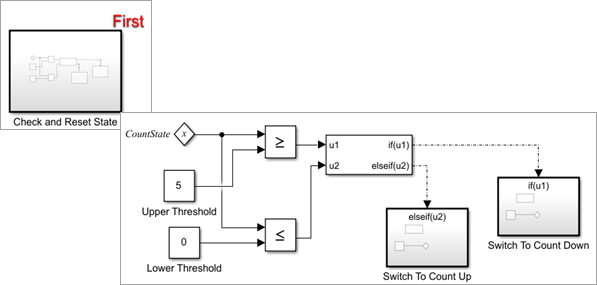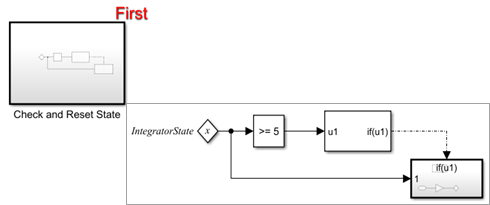模块
通过设置模块参数来自定义模块行为
要创建 Simulink® 模型,您可以向模块图中添加模块,然后将这些模块连接起来并进行配置。您可以为在仿真期间控制模块计算的数值模块参数指定值,还可以调整控制外观的模块属性。
调整模块的参数和属性可实现以下目的:
在设计模型的过程中用各种参数值做试验。
通过估计参数值使仿真结果与测得的数据相匹配。
通过优化参数值设计一种高效的控制算法。
记录模块并自定义外观。
通过创建可在模块和模型之间共享的全局变量,定义系统常量。
函数
类
Simulink.DualScaledParameter | Specify name, value, units, and other properties of Simulink dual-scaled parameter |
Simulink.Parameter | 存储、共享和配置参数值 |
Simulink.VariantControl | Create a variant control variable object (自 R2021a 起) |
Simulink.VariantVariable | Create variant parameter object (自 R2021a 起) |
主题
模块参数
- 设置模块参数值
模块的数值参数决定它们计算输出值的方式。要控制模块执行的计算,您可以指定参数值。 - 通过创建变量来共享和重用模块参数值
要将多个模块参数设置为相同的值,可以使用您创建的且存储在工作区(例如基础工作区、模型工作区)或数据字典中的数值变量。 - Use Variant Parameters to Reuse Block Parameters with Different Values
Design one model for many variants of a system that differ in block parameter values. - Parameter Interfaces for Reusable Components
For each block parameter in a reusable component, specify the same value for all instances of the component or a different value for each instance. - 在结构体中组织相关的模块参数定义
通过将模块参数值汇聚到结构体中,提高模型的可读性并减少模型的维护工作。 - 使用模块参数值进行调优和试验
构建模型时,您可以使用模块参数(例如,Transfer Fcn 模块的系数)进行试验,以帮助您确定使用哪些模块。 - 优化、估计和扫描模块参数值
通过参数扫描并将真实系统中的不确定性纳入考虑范围来调整控制参数,估计未知模型参数并测试控制算法的稳定性。 - 在仿真和代码执行期间在参数值集之间切换
通过将相同模块参数的独立值集存储在结构体数组中,在这些值集之间进行切换。 - Control Block Parameter Data Types
Control the data type that Simulink and the generated code use to store block parameter values in computer memory. - 指定模块参数的最小值和最大值
通过设置数值模块参数的最小值和最大值,完全指定设计并优化生成的代码。 - 以编程方式指定模块参数和属性
要编写修改模块行为的脚本,请确定模块参数和属性的编程名称和支持的值。
模块属性
- 指定模块属性
控制模块外观并为模块添加自定义说明。指定模块执行优先级和回调。 - Specify Blocks to Execute First or Last
Specify block execution order. - Associating User Data with Blocks
Associate your own data, such as a numeric variable, with a block.
